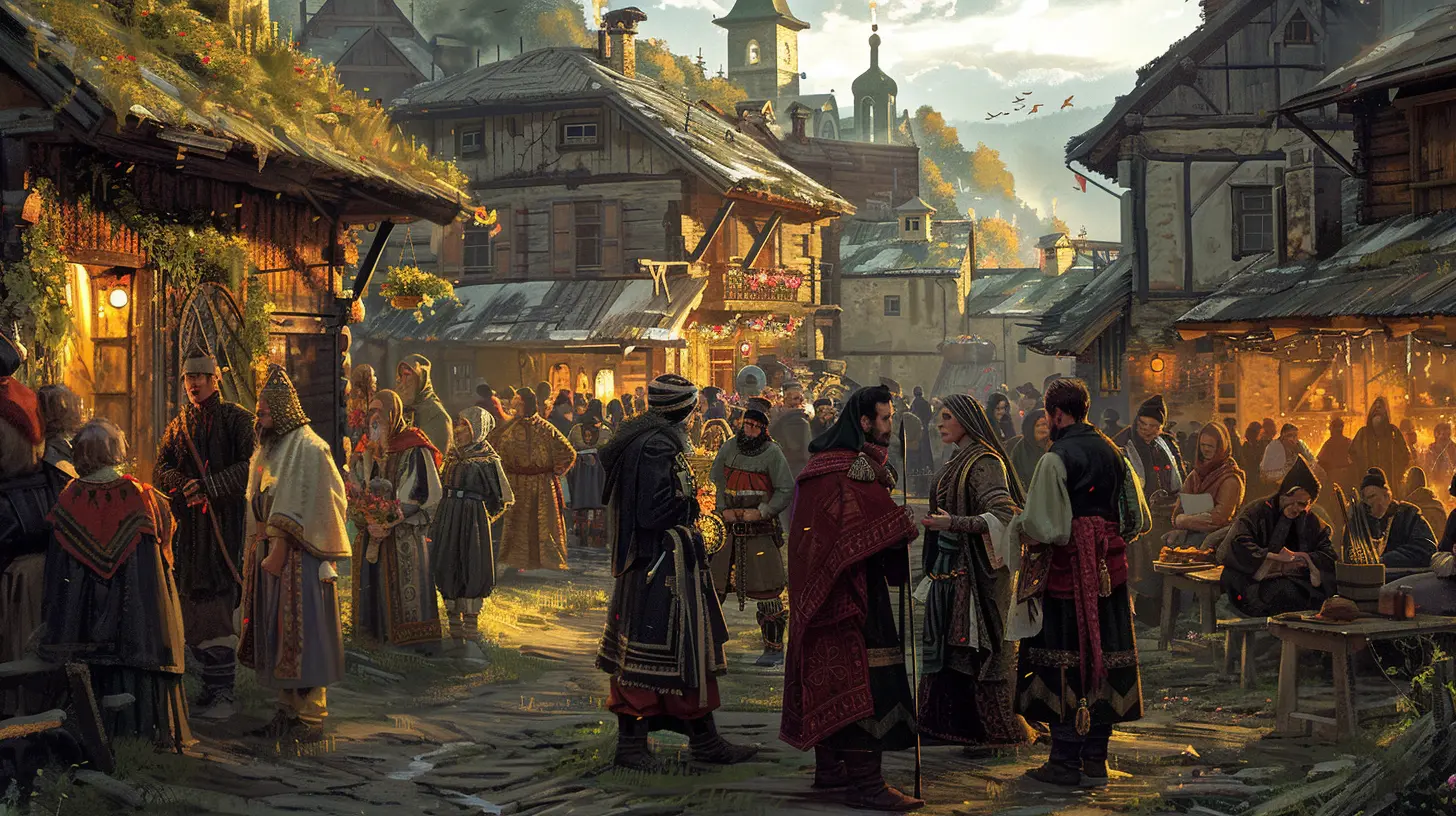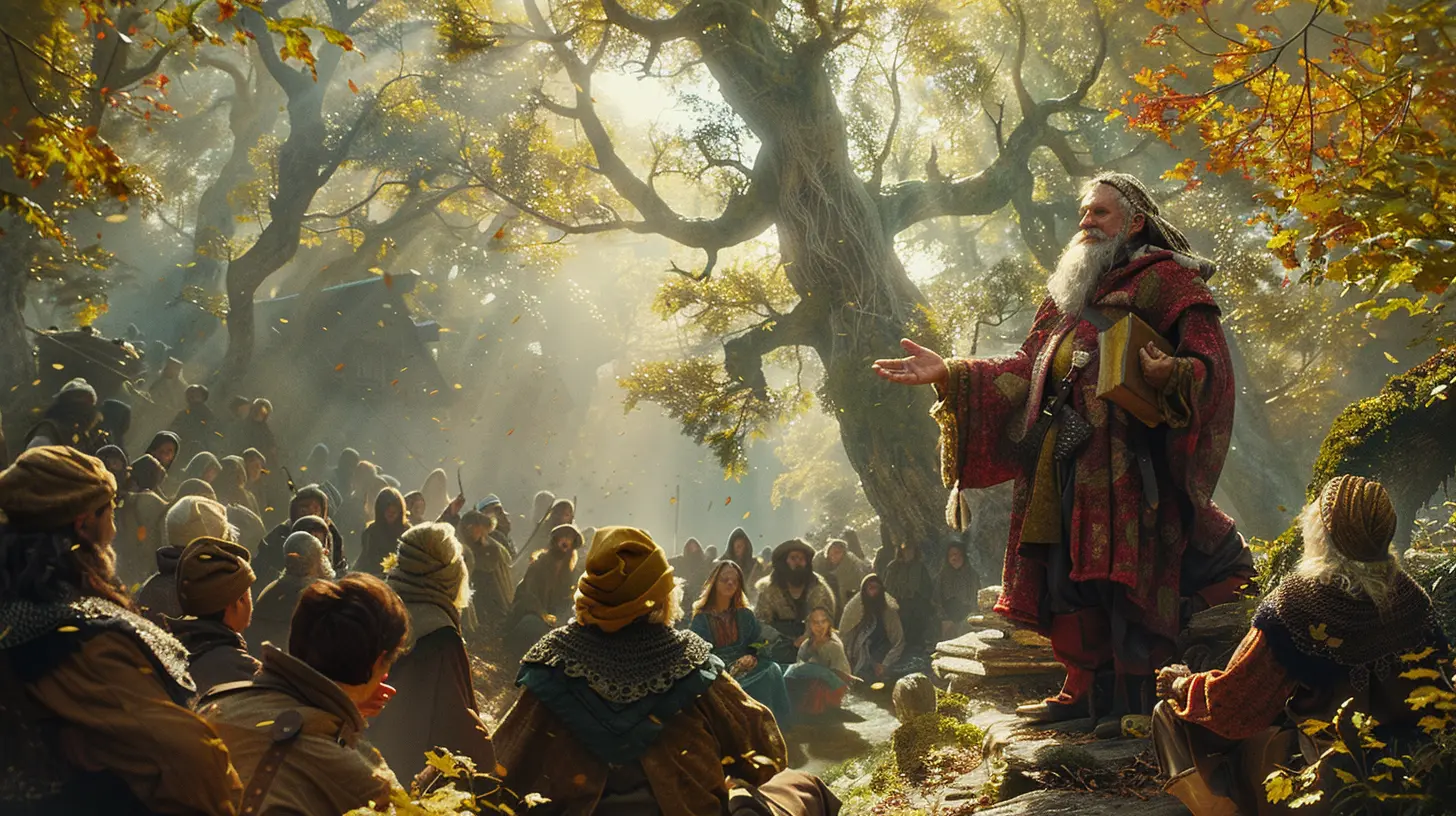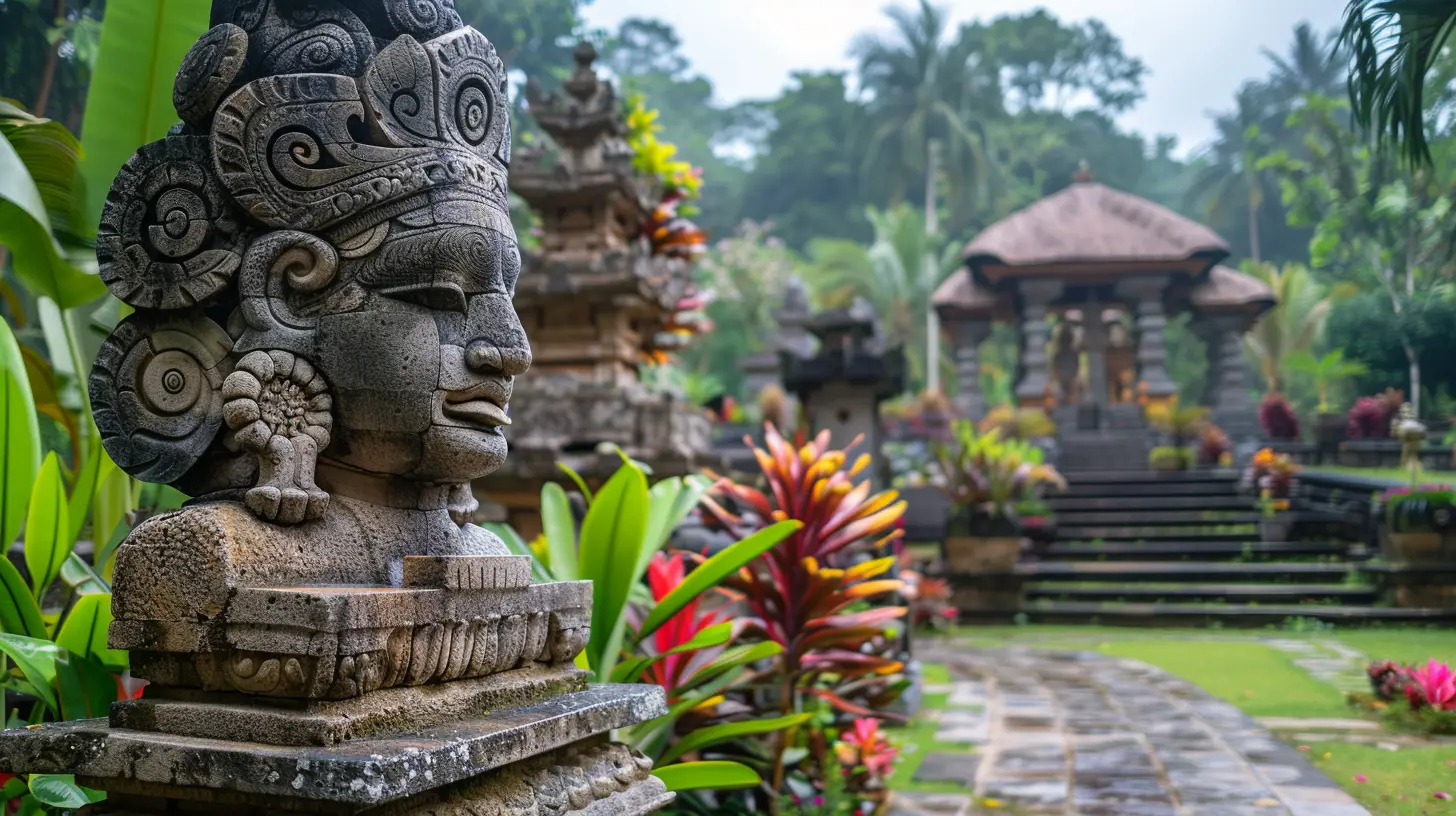The Role of Folk Tales and Legends in Preserving Heritage
5 May 2025
Have you ever sat around a fire, listening to the mesmerizing tales of old? Or perhaps your grandparents told you fantastic stories that seemed too magical to be true? Folk tales and legends are more than just bedtime stories—they hold the essence of our cultures, traditions, and histories.
But why do these stories matter so much? And how do they help in preserving our heritage? Let’s take a deep dive into the enchanting world of folk tales and legends and uncover their undeniable role in keeping cultures alive.

What Are Folk Tales and Legends?
Before we jump into their significance, let’s get some basics right.- Folk tales are traditional stories passed down orally through generations. They often feature moral lessons, supernatural elements, and cultural values.
- Legends, on the other hand, are semi-historical stories rooted in real-life events but often exaggerated over time. Think of stories about heroic warriors, mythical creatures, or famous rulers.
Both play a crucial role in shaping cultural identity and keeping traditions from fading into oblivion.

The Oral Tradition: Passing Down Stories Through Generations
Centuries ago, before written records became common, people relied on oral storytelling to pass knowledge, history, and beliefs to younger generations. These stories weren’t just entertainment; they were a means of preserving wisdom, values, and cultural identity.Imagine living in a time when books were rare or didn’t exist. Knowledge had to be memorized and shared vocally. Storytellers, often the elders of the community, were the keepers of history. Through their words, ancestors remained alive, traditions thrived, and societies stayed connected to their roots.

Folk Tales as Cultural Time Capsules
Folk tales are essentially time capsules, preserving the essence of a community’s way of life. They reflect the beliefs, morals, and customs of a particular society, offering insight into how people lived, loved, and fought for survival.Take, for example, Aesop’s Fables. These stories, believed to have originated in Ancient Greece, teach timeless moral lessons. Similarly, African folk tales often emphasize respect for nature, ancestors, and the balance of life—values that remain central to many African cultures today.
When we listen to these stories, we’re not just hearing words; we’re stepping into history, understanding what mattered to the people of that time.

Legends and National Identity
Legends have a unique way of shaping national identity and pride. Every country has its own legendary figures—heroes, warriors, or supernatural beings that represent their struggles and triumphs.Take King Arthur and the Knights of the Round Table. This legendary figure, though debated by historians, has been a symbol of chivalry, bravery, and justice for centuries. The story of Arthur isn’t just a tale—it’s a powerful tool that has shaped British identity and inspired countless literary works.
Similarly, in Japan, the legend of Momotarō (Peach Boy) represents courage, loyalty, and perseverance—values deeply ingrained in Japanese culture.
These legends give people something to rally around, a common ground that unites them and keeps their heritage alive.
The Moral Compass of Society
At their core, folk tales and legends serve as society’s moral compass. They teach lessons about good and evil, right and wrong, kindness and greed.Remember The Boy Who Cried Wolf? This simple yet powerful tale warns against dishonesty. Or The Tortoise and the Hare, which reminds us that slow and steady wins the race. These lessons remain relevant no matter how much time passes.
By sharing these stories with younger generations, societies continue to reinforce essential values, ensuring that cultural ethics and traditions don’t fade away with time.
Folk Tales and Legends in Modern Media
You might think that folk tales and legends are outdated, overshadowed by modern storytelling. On the contrary, they are alive and thriving in today’s books, movies, and TV shows.Many blockbuster films and fantasy books borrow heavily from age-old myths and folklore. Take The Lord of the Rings, inspired by Norse mythology, or Harry Potter, which incorporates elements from European folklore. Even Disney’s animated classics like Mulan and Aladdin originate from traditional stories passed down for generations.
These adaptations help make folk tales and legends relevant to new audiences, ensuring their survival in a rapidly changing world.
The Role of Storytelling Festivals and Cultural Events
Many cultures actively celebrate folk tales and legends through storytelling festivals. These events bring communities together, reviving ancient narratives in a lively and interactive way.For example:
- The Scottish International Storytelling Festival celebrates Scotland’s rich folklore.
- The Kerala Folklore Theatre and Museum in India showcases traditional storytelling through dance, drama, and music.
- The Native American Storytelling Festival keeps indigenous traditions alive through oral storytelling sessions.
Such initiatives ensure that traditional stories remain a part of contemporary society, allowing younger generations to connect with their cultural roots in a fun and engaging way.
The Threat of Losing Folk Tales and Legends
Despite their importance, folk tales and legends are at risk. The rise of digital entertainment, globalization, and changing lifestyles means fewer young people are exposed to traditional storytelling.Many indigenous languages, which hold unique folk stories, are also disappearing. When a language dies, so do the stories tied to it. This is a major concern for cultural preservationists who are working hard to document and revive these narratives before they fade away forever.
How Can We Preserve Folk Tales and Legends?
Fortunately, there are ways to protect and keep these treasured stories alive:1. Encourage Storytelling at Home
Parents and grandparents should share traditional stories with their children. Bedtime storytelling isn’t just entertaining—it’s a direct way to pass down heritage.2. Teach Folk Tales in Schools
Incorporating folk tales into school curriculums can help children appreciate their cultural heritage from an early age.3. Digital Documentation
Recording and archiving folklore through books, websites, podcasts, and videos can make them accessible to a global audience.4. Support Cultural Festivals and Museums
Attending storytelling festivals and supporting museums that focus on folklore can help ensure these traditions remain alive.5. Turn Folk Tales into Modern Media
Adapting folk tales into films, animations, or even video games can make them appealing to younger audiences in today’s digital age.
Conclusion
Folk tales and legends are much more than just old stories—they are the heartbeat of cultures around the world. They carry history, morals, values, and identity from one generation to the next.Without them, we risk losing a crucial part of who we are. So, the next time you hear an old legend or folk tale, remember—it’s not just a story. It’s a bridge to the past, a guide for the present, and a treasure for the future.
Let’s keep these stories alive!
all images in this post were generated using AI tools
Category:
Cultural ExperiencesAuthor:

Tracie McAdams
Discussion
rate this article
4 comments
Valeris Frye
In whispers of old, tales entwine, Heritage blooms, where legends shine, A bridge to our roots, timeless and divine.
May 12, 2025 at 4:38 PM

Tracie McAdams
Thank you for beautifully capturing the essence of folk tales! They truly are essential in preserving our heritage and connecting us to our roots.
Abigail Vasquez
What a beautiful reminder of how folk tales and legends connect us to our roots! They not only preserve our heritage but also enrich our travels with the stories and wisdom of the past. Thank you for sharing!
May 7, 2025 at 3:03 PM

Tracie McAdams
Thank you for your insightful comment! I'm glad you feel the same way about the importance of folk tales in connecting us to our heritage.
Karly McIlwain
What a lovely read! It’s amazing how folk tales and legends not only entertain but also preserve our heritage. They connect us to our roots and remind us of the rich stories that shape our cultures!
May 6, 2025 at 3:22 PM

Tracie McAdams
Thank you! I'm glad you enjoyed it. Folk tales indeed play a vital role in preserving our cultural heritage and connecting us to our roots.
Lyra Gates
What a delightful read! Folk tales and legends truly weave the vibrant tapestry of our heritage, keeping traditions alive and celebrating culture. 🌟
May 5, 2025 at 2:21 PM

Tracie McAdams
Thank you! I'm glad you enjoyed it. Folk tales and legends are indeed vital in preserving our cultural heritage. 🌟



